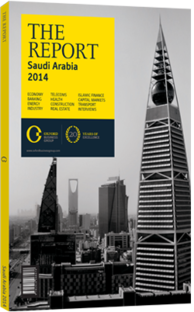Making connections: Both fixed and mobile broadband are seeing sustained growth as services expand
Internet services in the Kingdom continue to expand, as the number of Saudis getting online grows. The total number of fixed broadband subscriptions stood at 2.92m as of the end of 2013, up from 2.54m at end-2012, according to the Communications and Information Technology Commission (CITC). Of these, 1.85m were ASDL subscriptions and 800,000 were fixed wireless (WiMax) subscriptions, with the remainder made up of leased lines and fibre-to-the-home (FTTH) or fibre-to-the-building connections. In all, some 45.5% of households had a fixed broadband connection.
Broadband speeds have been increasing rapidly. As of April 2014, average household user download speeds stood at 10.3 Mbps, up from 7.64 Mbps a year previously and 5.32 Mbps in April 2012, according to US-based firm Ookla. This compared to the global broadband average speed of some 18 Mbps and ranked the Kingdom 76th out of 190 countries, as well as in third place in the GCC (behind the UAE and Qatar).
The next step, according to some industry players, is to improve the quality of fixed connections. “The quality of DSL lines in the Kingdom is not good and subscriptions are also expensive compared to other countries in the region,” said Al Walid H Khairi, deputy CEO of local ICT firm Ajna United. However, he added that current efforts to roll out new fibre should change this.
FTTH: Indeed, operators are now rapidly rolling out direct fibre connections to Saudi households. STC and Mobily subsidiary Bayanat Al Oula currently offer FTTH, while fellow mobile operator Zain does not currently have a FTTH licence. STC said its fibre network reached more than 900,000 households at the end of March 2014, up 54% year-on-year, while Bayanat Al Oula had connected 530,000 homes to its fibre network by the end of 2013 and aims to add another 700,000 in 2014.
This growth trajectory is set to continue. “FTTH is a new concept in Saudi Arabia, but there is huge demand for it, in part because of poor wireless connections in some areas,” said Mohammad Abdel Jawad, CFO of Qanawat. “There is also strong demand for services such as internet-protocol television (IPTV) that rely on high-speed connections,” he told OBG, adding that the uptake of FTTH is likely to be higher than is generally expected. “National penetration could rapidly reach 25%,” he said, given that there is likely to be a major boost in uptake in the next year as operators launch additional value-added services.
MOBILE CONNECTIONS: Mobile broadband subscriptions stood at around 14.27m by the end of 2013, giving a penetration rate of 47.6% (up from 42.1% in 2012 and 9.7% in 2010). Of these, 4.59m were standard mobile subscriptions (that is, those including both voice and data) and 9.68m were dedicated mobile data subscriptions. Mobile download speeds are also on the rise; these stood at 6 Mbps (close to the global average of 7.7 Mbps) in April 2014 – ranking the country 54th out of 103 worldwide – up from 5.32 Mbps a year earlier and 2.52 Mbps in April 2012. Ookla put average mobile download speeds on STC’s mobile broadband network at 7.38 Mbps, and at 4.69 Mbps for Mobily.
Most mobile broadband is still provided over 3G networks, but all mobile operators launched 4G long-term evolution (LTE) networks in 2011 and most of the population now has access; as of October 2013, STC had provided LTE coverage to around 76% of the Saudi population, with the aim of bringing this to 90% by the end of 2014. LTE uptake has been growing quickly; the Telegeography Mobile Comms Database put the number of STC’s LTE subscribers at 101,875 as of June 2013, more than double the figure at the end of March and up from 15,000 subscribers six months previous.
“Practically every Saudi has at least one mobile phone if not two, and with 4G coverage covering all the Kingdom’s major population centres, data usage is massive,” Tariq Enaya, Managing Director of Cisco Saudi Arabia, told OBG. “To support this demand mobile operators are investing huge amounts of money to expand their bandwidth.” The Kingdom’s data infrastructure is set to be further tested with the launch of next generation services, such as STC’s new LTE-advanced network.
You have reached the limit of premium articles you can view for free.
Choose from the options below to purchase print or digital editions of our Reports. You can also purchase a website subscription giving you unlimited access to all of our Reports online for 12 months.
If you have already purchased this Report or have a website subscription, please login to continue.

